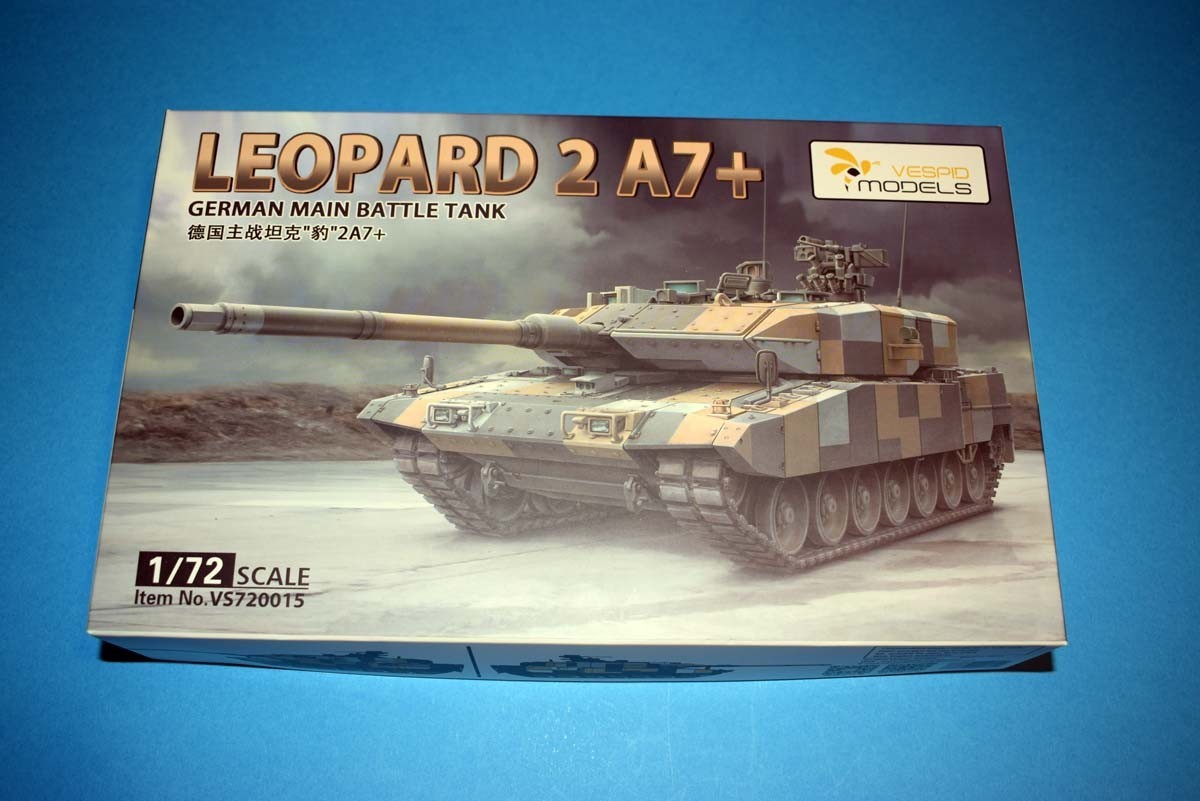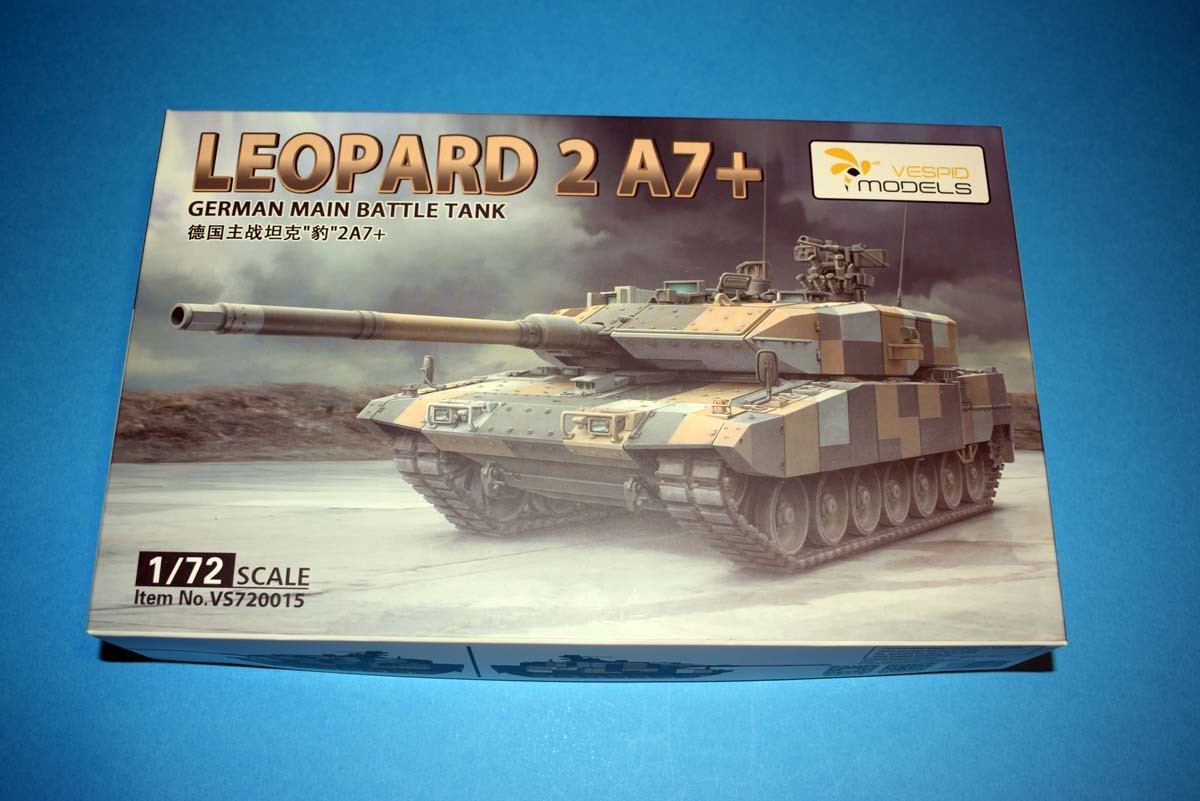
Introduction
Vespid Models although they have not been in the game for very long, are in my opinion, becoming the premier company when it comes to 1/72nd scale releases. My reasoning for this is that unlike any other company I know releasing injection moulded kits in this scale, they also include photo etch and metal barrels as options while not charging the earth. In this review we look at, the Leopard 2A7+ which is the latest edition to the Leopard 2 family, and is either in or coming into service.
Review
This offering from Vespid arrives in a substantial cardboard tray, with a separate card lid showing the artwork. Inside you will find a number of sealed plastic bags containing no more than 2 sprues in each bag, with the hull and turret elements individually packaged. There is also a Ziplok bag that contains photo etch, a metal barrel, a metal cable and decals. An examination of the sprues reveals very cleanly moulded parts, with reasonable sized gates which are also not excessive in number. Access to all of the parts is in my opinion good and so removal should not be inhibited.
The lower hull of the model is cleanly moulded with good exterior detail. All of the suspension components are individually provided, and gives you some idea of why this model is not a 5 minute build. With that said, I have not observed anything in the instruction booklet that is overly complicated, with the exception of the size of some elements. The tracks for the release are link and length, and so designed for display on an even surface and offering a high degree of detail in the easiest way possible when it comes to assembly.
The upper hull is where you start adding extra armour, but it is pleasing to see that the mine protection plate on the underside has also been replicated. The large circular vents on the rear engine deck have two part photo etch covers, and the front armour plate has been designed, that in this case you cannot show the driver’s hatch open. The cable provided in the release is to represent the tow cables, and has separate eyes to add at each end. The side protection armour is provided in two pieces, and has good detail on it. Tools are individually moulded and most of the issues with assembly will come down to the bending and use of the provided photo etched elements, such as the wing mirror mounts.
The turret of the model is conventionally an upper and lower halves. The main gun has been provided with the possibility to elevate or depress. The option of a metal or plastic barrel - the metal barrel in this case has a plastic muzzle and the recuperator is in two halves for addition to the barrel. From what I can see with my old eyes, detail is of a very good standard. The turret itself has a lot of very small details, including the distinctive armour at the front of the turret, which gives it that very distinctive shape. The smoke dischargers has each pot individually moulded, so great detail - but eye strain!!. The hatch detail on the turret could be left open, but is not indicated as such. Items such as the vision device, remote weapons station, and a number of very small plastic and photo etch elements will result if you are capable in an especially highly detailed model in this scale, which checking against Tankograd’s recent book release covering the Leopard 2 I see no obvious issues.
Vespid Models has released 2 finishing options for this model - 1 with an urban digital camouflage such as seen on the Chieftain’s in the Berlin Brigade and a 3 tone camouflage which is more akin to a dessert pattern. No details are provided on what these finishes represent, but I suspect this may be due to the kit having been in production before going into service and so the model is in a pre-service format.
Conclusion
This release from Vespid Models offers the modeller, with restricted space an exceptional Leopard 2A7 in this scale. From the box, without any additional purchases you have all of the parts required to produce a very detailed model. But you will require good eyes and a steady hand to get the most from what is provided. I cannot really fault the model itself, as its limitations really depend on the modeller, rather than the model.

